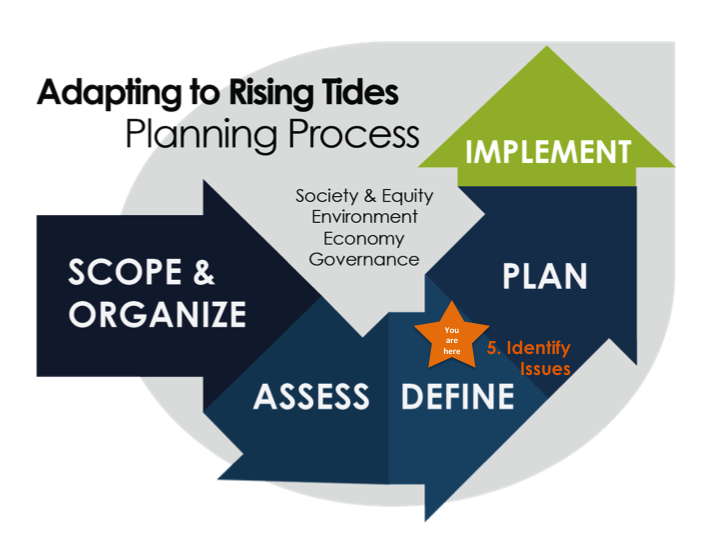This step enables the project to transition effectively and transparently from the assessment findings to the development of adaptation responses.
The primary tasks in this step, summarizing asset-specific issues and identifying the key planning issues for the project, are thoughtful processes. The project team begins by synthesizing assessment findings for each of the project assets into brief issue statements on the profile sheets. In summarizing these asset-specific issues, the project team can flag vulnerabilities that cannot be addressed at the asset or sector scale, and may be part of the key planning issues. Often vulnerabilities that have significant or early consequences, require coordinated decision-making or funding, or require regulatory changes to solve, will underpin the key planning issues. Looking forward in the planning process, these are the issues that will require the focused and collaborative efforts of the project team and working group to develop adaptation responses.
The project resilience goals are also revisited and refined in this step to ensure that they are still relevant to the working group in light of the assessment findings. This is of particular importance because project resilience goals are one of the factors used to evaluate trade-offs among different proposed adaptation responses.
Outcomes of this step
- Issue statements for each of the asset profile sheets that communicate a clear picture of the problems that result from the climate impacts
- A subset of project-wide, key planning issues that are identified using a transparent process, and that have buy-in from the working group
- Refined project resilience goals based on the findings of the assessment
ART Supplies for this step
- How-to Guide: Issue Statements

- How-to Guide: Key Planning Issues

- Example Agenda: Shifting from Assessment to Adaptation

- Good Planning Guide: Transparent Decision Making

- ART Subregional Adaptation Responses

Additional information referenced in this step:
- How-to Guide: Vulnerability & Consequence Statements

- How-to Guide: Profile Sheets

- Hayward Shoreline Resilience Project Profile Sheets

- Oakland/Alameda Resilience Study Example Profiles Sheets

- Findings by Issue > Overarching Vulnerabilities
- Example Key Planning Issue Posters





